In September 2014, Southwind Adventures Travel Specialist Cynthia Ord embarked on the M/V Aria, a 32-passenger deluxe vessel, for a five-day Peruvian Amazon river cruise. The voyage departed from Iquitos, the largest city in the Peruvian rainforest.
For me, cruising the Peruvian Amazon in the luxury of the M/V Aria had its obvious perks. The experience felt almost like spectating a grand performance. In my cabin I had a floor-to-ceiling panoramic window framing an unbeatable view of the river, and a California king-sized bed with fine Peruvian cotton linens where I could curl up and just watch the rainforest landscape drift by.
The entire crew seemed to have been cast for their roles, with talented local naturalist guides that informed and entertained on every excursion, and stealthy housekeeping that visited each cabin three times a day and left towel sculptures from their large repertoire of animal shapes. And the food! Each day’s gorgeous buffet-style lunch and tasting menu dinner were expertly designed by Pedro Miguel Schiaffino, Peru’s top jungle-inspired chef. I wanted to applaud at the end of each meal.
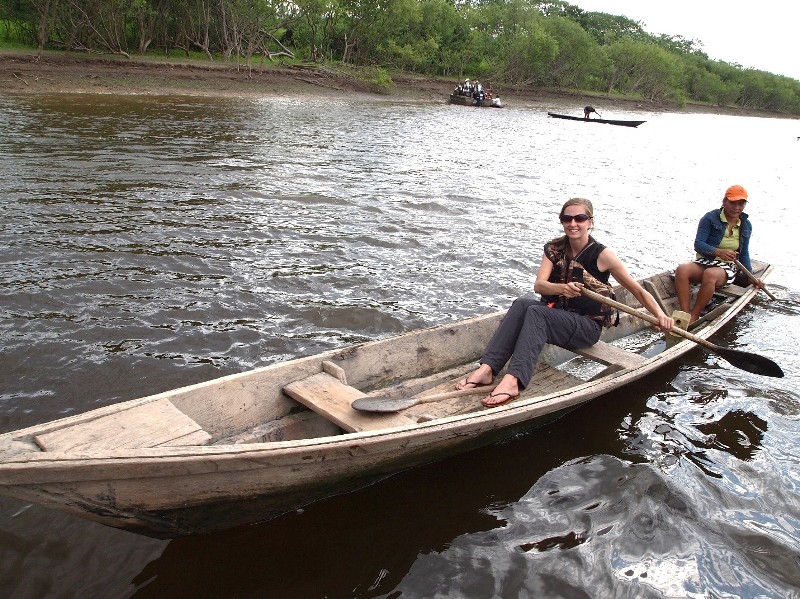
The three naturalist guides on board often reminded us, however, that we were not simply spectators of this marvelous display in the world’s largest rainforest, but also actors in it. By traveling to the Amazon on this cruise, we were playing an active role in conserving it. These are the more subtle – but equally important – perks of the journey: our actions and contributions as tourists transform the way local people appreciate their environment.
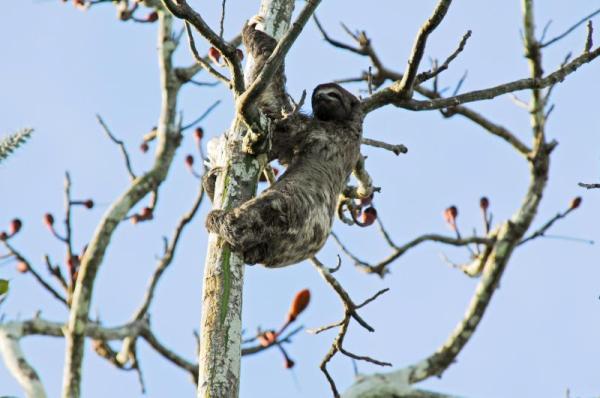
How, I asked myself, is peering through binoculars and zooming around in motorized skiffs helping conservation? As my guide Roger explained, it teaches local people the high value of the landscape as it is – intact. The examples are many. When Aqua Expeditions hires a rural villager to help spot wildlife during an excursion on land, he sees an ongoing opportunity to earn income – as long as there are still trees and wildlife to show. This curbs logging and poaching in the area.
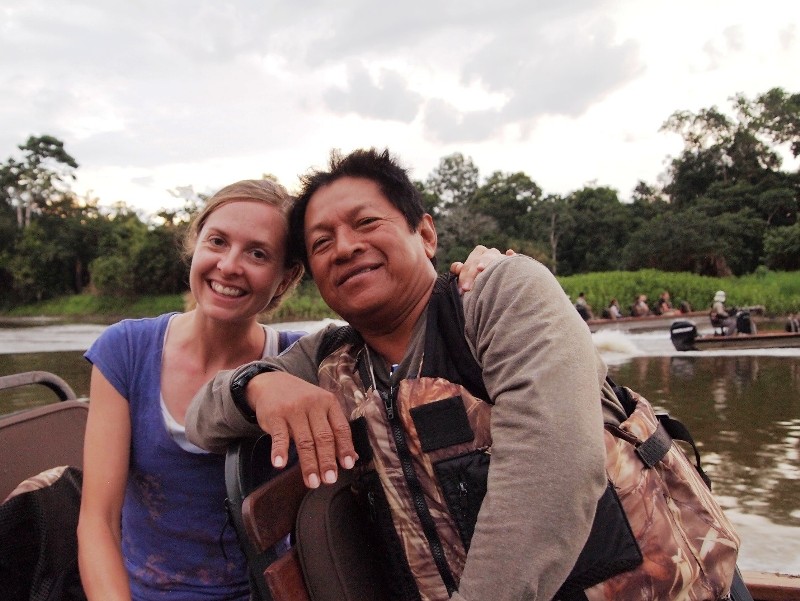
The ripple effect of a cruise on the M/V Aria became clearer each day of the trip. Just as the waves from our skiffs fanned out and reached the traditional fishermen’s boats nearby, we were also making little waves economically in the area. The M/V Aria hired local women to help us paddle along in their dugout canoes (it’s harder than it looks!). The cruise line paid the entrance fee into the Pacaya Samiria National Reserve, which helped to support the staff we met at the ranger station who protect the area. The cruise line contributes to the local school we visited, where the kids were happy to meet foreigners and learn our names. I think my favorite example came from one of the naturalist guides, Julio, who grew up in a tribe on the river. His career in tourism has allowed him to move up from a subsistence way of life and send his two daughters to college. Now they both have professional careers, and Julio is writing an autobiography, which he will call “Julio of the Jungle.”
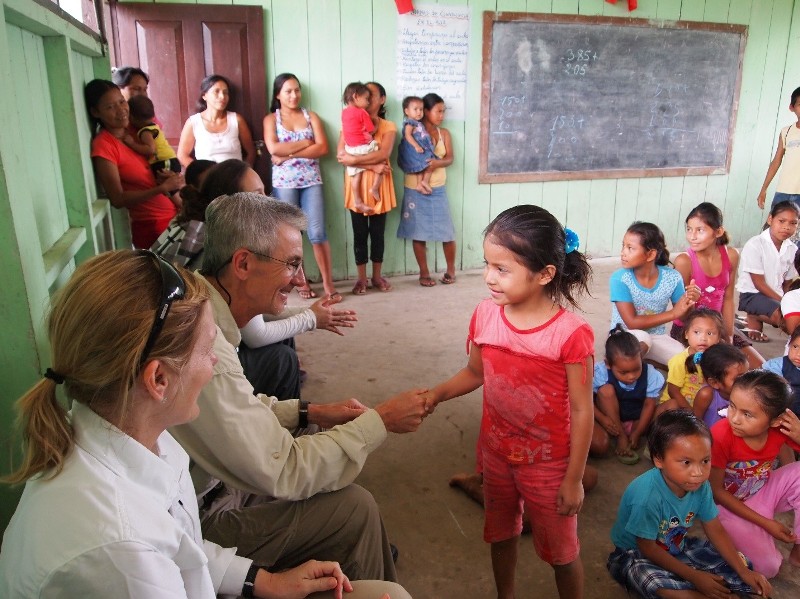
The cruise was creating livelihoods and opportunities for everyone I had the pleasure to meet, teaching them the value of conservation for future tourism. But the ripple effect doesn’t end there. Aqua Expeditions works behind the scenes to educate locals about the environment and its value. They send biologists to work with local agriculturalists on alternate methods of harvesting fruit from trees that don’t require deforesting. They work with schools like the one we visited, teaching kids about endangered species and the risks of losing them.
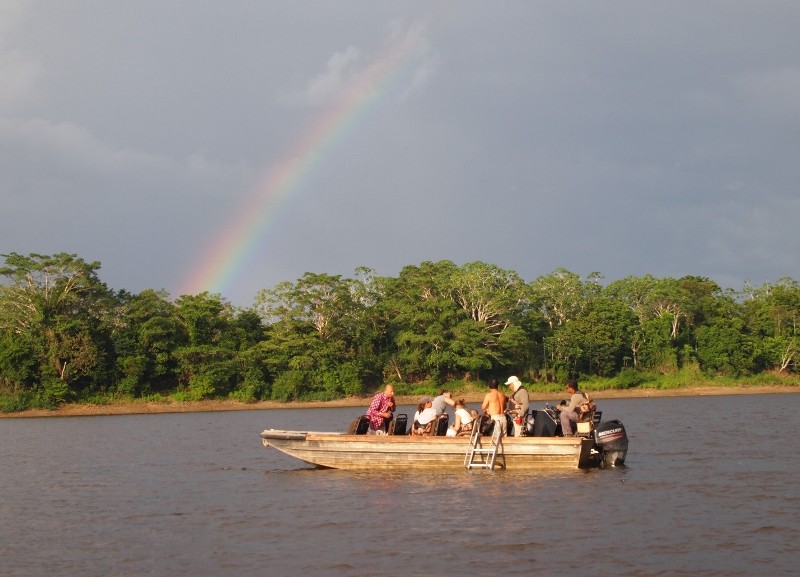
On the last day, we visited my favorite exhibit of conservation in action – the Manatee Rescue Center. Tribal societies in the area would hunt this rare and docile aquatic mammal. They were used as food or captured as pets. Manatee populations dropped dramatically. Now, through widespread education and rescue efforts such as this one, manatees are slowly rebounding. At the center, we met manatees that had been captive as pets, and we felt the tickle of their bristly mouths as we fed them water lettuce. For me, this was a perfect finale for my time in the Amazon – an awestruck close-up wildlife encounter at one more conservation project that the cruise helps to support.
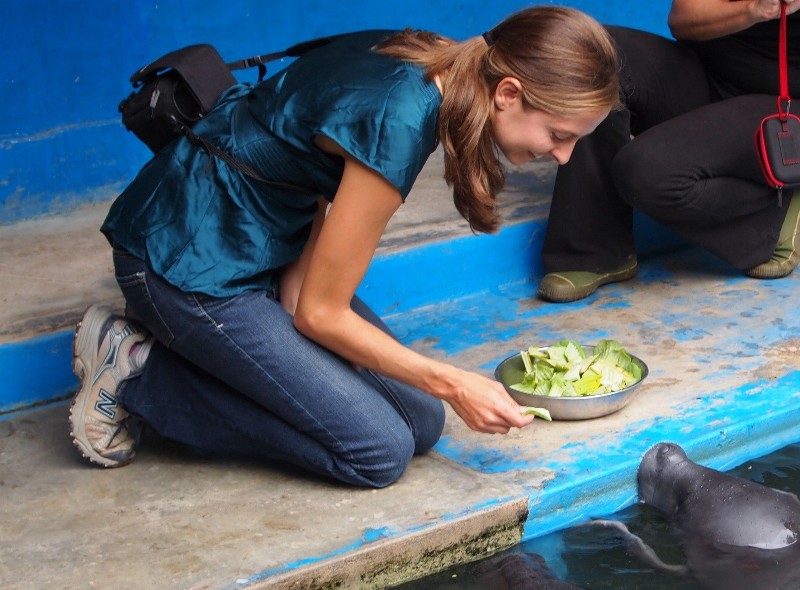
To plan a personalized adventure aboard the M/V Aria or its sister ship the M/V Aqua, see our Peruvian Amazon Cruise trip page, and contact a Southwind Travel Consultant.
